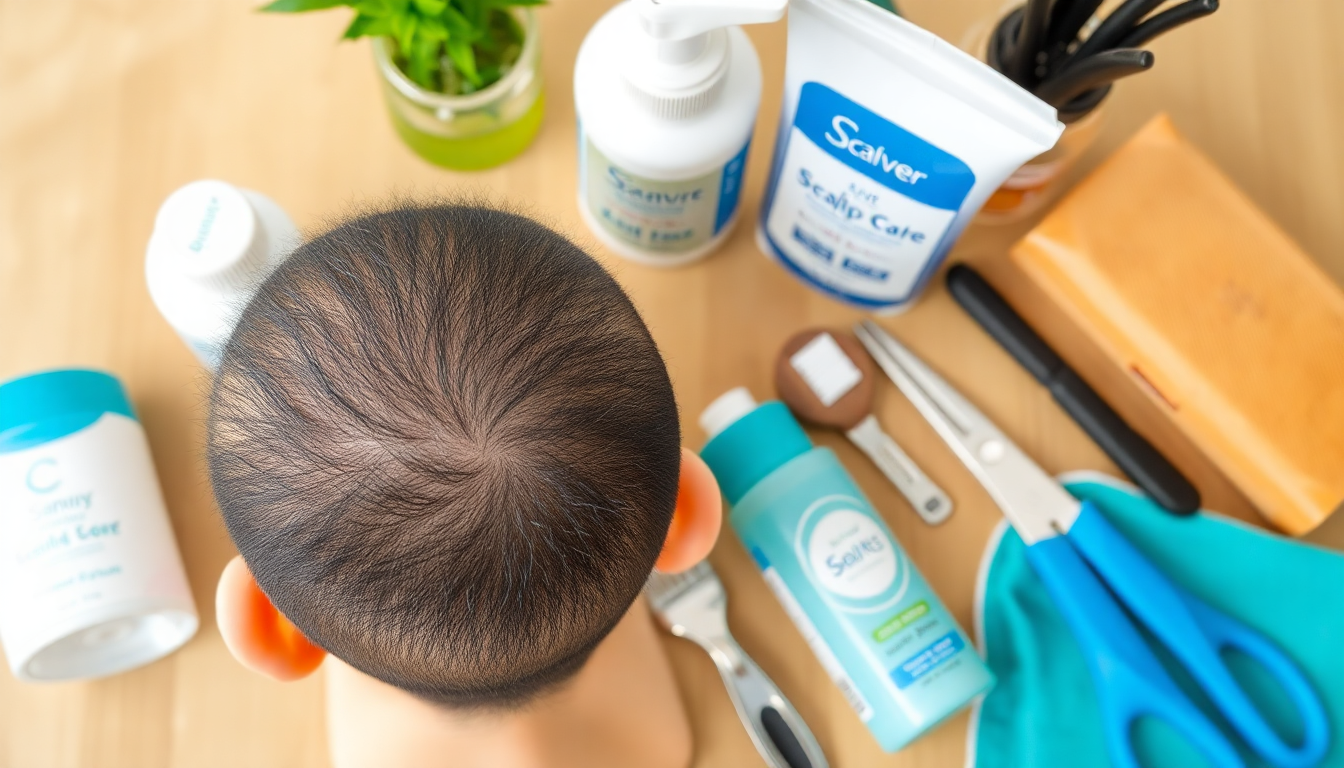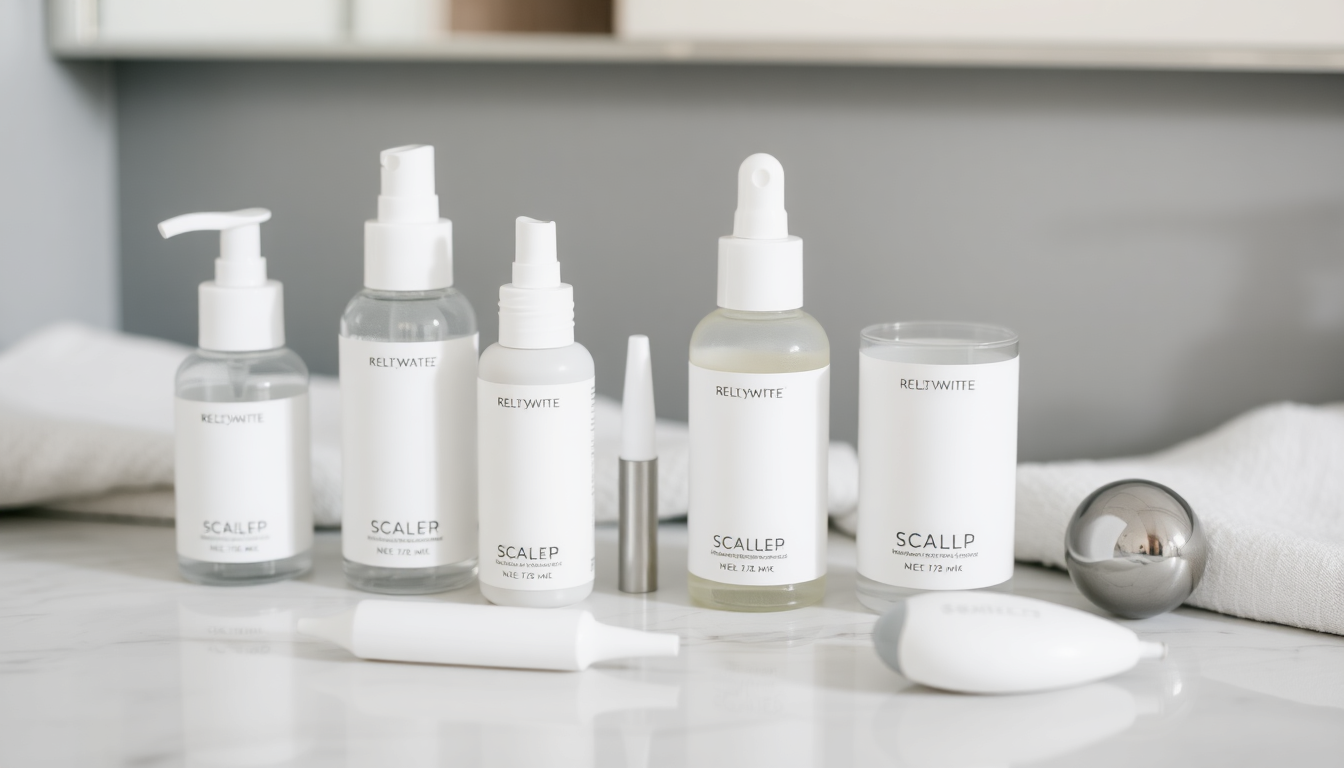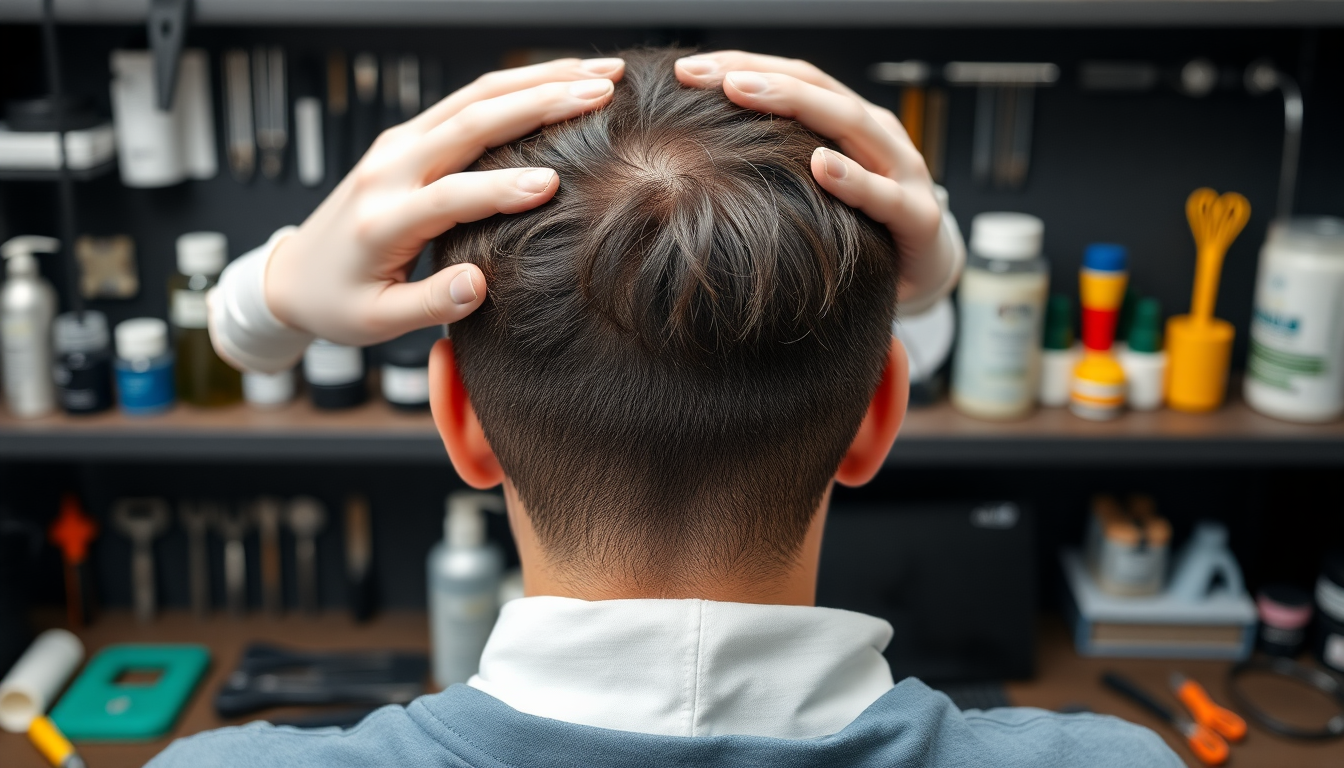Introduction: Why a Scalp Stacking Lab Works
Scalp stacking is a systematic way to test combinations of topical actives (like peptide serums), scalp‑friendly microbiome supports (prebiotic treatments) and mechanical or light devices (LED, microneedling, massagers) to discover a low‑irritant routine that supports hair density and scalp comfort. Instead of buying random bottles and hoping for the best, a Scalp Stacking Lab applies basic scientific principles — baseline measurement, single‑variable testing, repeatability and objective recording — so you can determine what truly benefits your scalp.
Who This Guide Is For
- People experiencing early thinning or diffuse density loss who want a low‑irritant, home‑based testing plan.
- Anyone frustrated by inconsistent product results and who wants to apply a rational testing framework.
- Caregivers building a protocol for family members with sensitive scalps and an interest in gentle, effective options.
Important Safety Notes and Medical Boundaries
This article provides practical, non‑medical guidance for testing over‑the‑counter products and consumer devices. It is not a substitute for medical diagnosis or prescription treatment. If you have an active scalp disease (infected lesions, severe psoriasis, uncontrolled eczema), are on prescription hair medications, or have systemic conditions affecting hair, consult a licensed dermatologist before starting new devices or actives. Always perform patch tests, and stop any product or device that causes persistent burning, blistering, or spreading inflammation.
How to Plan a Robust At‑Home Trial (Step‑by‑Step)
A clear plan reduces noise and increases the chance you’ll get an actionable result. Below is a practical stepwise protocol you can use immediately.
1. Gather baseline data
- Photos: take high‑resolution photos from consistent angles — front, top (vertex), and a 45° angle per side. Use the same lighting and a small ruler held next to the scalp for scale. Repeat photos at the same times of day if possible.
- Routine log: write down shampoo frequency, styling habits, supplements, medications and recent haircuts or color treatments.
- Subjective metrics: rate itch, flaking and perceived density on simple scales (0–3 for irritation; 0–10 for perceived density).
2. Select products and devices carefully
Build a testing set that balances hypothesis and tolerability. For example:
- Two peptide serums with different peptide blends or vehicles.
- One prebiotic scalp treatment (spray or leave‑on mist).
- One device: LED cap/comb, a gentle dermaroller (0.25–0.5 mm) or a scalp massager.
For ready formulations designed for sensitive scalps, consider exploring curated ranges such as Eelhoe peptide serums and Eelhoe prebiotic scalp treatments, which emphasize low‑irritant delivery systems.
3. Patch testing and ramping
- Apply a small amount behind the ear or on the inner forearm for 48–72 hours before full‑scalp use.
- If tolerated, start using the product at half frequency (e.g., every other night) for one week, then increase to recommended frequency if there is no reaction.
4. Use a single‑variable approach
Introduce only one new active (product or device) at a time for at least 6–8 weeks. This isolates cause and effect. If you must stack, start with the gentlest product and add components only after you have recorded outcomes.
How Long Should a Trial Run?
Hair growth cycles are slow. For many topical interventions, 8 weeks is a good minimal period to assess tolerability and early signals; 12–24 weeks gives clearer evidence for density changes. Devices like LED may show subjective benefits in 8–12 weeks; microneedling often requires several sessions spaced weeks apart to produce visible change. Plan to run trials for 8–12 weeks where practical and keep consistent records.
Designing Measurements That Tell the Truth
Good measurements are objective when possible and consistent always. Use a combination:
- Photography: the most accessible objective measure. Use a tripod or marked position for consistency.
- Target area hair counts: choose a 1 cm2 area in a stable spot (e.g., just beside the hairline or a fixed point on the vertex). Use macro photos to count hairs before and after.
- Subjective logs: daily or weekly ratings for itch, flaking, pain and perceived density.
- Shedding logs: count visible shed hairs after combing or washing if you can reliably do so.
Deep Dive: Product Categories, Mechanisms, and How to Test Each
Peptide Serums: What to Expect and How to Compare
Peptides act as signaling molecules or cofactors intended to support the follicular microenvironment. Examples include copper peptides (GHK‑Cu) and synthetic signal peptides. They are often well tolerated but outcomes depend on formulation and concentration.
- Test design: run sequential 8–12 week comparisons (Serum A for 8–12 weeks, washout 2 weeks, Serum B for 8–12 weeks) or split‑scalp testing if you can reliably keep treatments isolated.
- What to measure: change in miniaturized hair count, comfort levels, and any shift in hair thickness perception.
- Compatibility: peptides pair well with LED and massaging devices; avoid combining with high‑strength acids or irritants.
- Sponsored pick: low‑irritant peptide blends such as those from Eelhoe peptide serums are formulated for predictable at‑home use.
Prebiotic Scalp Treatments: Supporting the Microbiome
Prebiotics are non‑living ingredients that feed beneficial microbes and can help rebalance the scalp ecosystem and strengthen barrier function. They may reduce inflammation, scaling and sensitivity — conditions that indirectly impact hair shedding.
- How to test: apply as directed (daily or several times weekly). Track changes in itch, flaking and scalp comfort over 6–12 weeks.
- Expected signals: reduced flaking, less itch and often improved tolerance for other actives.
- Pairing: useful to use prebiotics before or alongside peptides to create a stable environment.
- Sponsored pick: consider Eelhoe prebiotic scalp treatments designed for sensitive scalps and microbiome balance.
Devices: LED, Microneedling, Scalp Massagers — Which to Choose?
Devices offer alternative mechanisms: photobiomodulation (LED) aims to stimulate cellular metabolism; microneedling can promote repair responses and enhance topical delivery; massagers boost circulation and mechanical stimulation. Each has pros and cons.
- LED therapy: low‑risk, convenient. Test 2–4 sessions per week for 8–12 weeks and watch for improved scalp comfort and gradual density changes.
- Microneedling: start conservatively (0.25–0.5 mm). Use sterile technique and limit frequency (every 1–3 weeks depending on needle depth). Avoid applying strong actives immediately after deep needling.
- Scalp massagers: safe for daily use, affordable, and helpful for compliance and product distribution.
- Combination strategy: LED + peptide serum or massager + prebiotic often provides a gentle, synergistic approach. If testing device + topical, introduce one first and add the other after observing tolerability for several weeks.
- Sponsored pairing: for device-friendly serums engineered to be low‑irritant, see Eelhoe scalp care.
Stacking Strategies: Building a Low‑Irritant Protocol
Stacking means layering compatible products and tools without triggering inflammation. The principles below keep irritation low while maximizing signal detection.
- Start small: use one core active (e.g., a peptide) plus a gentle scaffolding product (prebiotic or hydrating base).
- Time separation: on days you microneedle, reserve immediate post‑needling care to bland, sterile serums. Introduce potent topicals days after needling rather than immediately unless the product is recommended for post‑needling use.
- Vehicle matters: serums in water‑based, low‑alcohol carriers are usually better tolerated than alcohol‑heavy solutions.
- Patch and ramp: always re‑confirm patch test results after adding a device or another active.
Sample Protocols — Beginner to Advanced
Beginner (Low Commitment, Low Irritation)
- Weeks 0–1: Baseline photos, patch tests for chosen products.
- Weeks 2–10: Apply a gentle peptide serum nightly. Use a prebiotic scalp mist 2×/week. Use a daily scalp massager for 5 minutes while applying serum.
- Measure: photos every 2 weeks, subjective logs weekly.
Intermediate (Moderate Commitment, Higher Signal)
- Weeks 0–2: Baseline and patch tests.
- Weeks 3–12: Peptide serum nightly, prebiotic mist 2–3×/week, LED 2×/week. Add microneedling 0.25 mm every 2 weeks starting week 6 if tolerated.
- Measure: photos every 2 weeks; miniaturized hair counts at baseline and week 12.
Advanced (For Experienced Users, Under Professional Guidance)
- Follow the intermediate plan with a more strategic layering: alternate stronger topical actives with recovery weeks; consider prescription options only under a clinician's supervision.
- Use more granular metrics: caliper measurements, standardized macro photography, or professional scalp imaging.
Troubleshooting and Interpreting Common Responses
- Initial increase in shedding: some actives cause a transient telogen shift. If shedding rises and then settles within 6–8 weeks, that may be expected. If shedding persists or worsens, discontinue.
- Persistent redness, burning, or weeping: stop the offending product immediately and seek medical advice if severe.
- No response after 12 weeks: verify compliance, confirm product authenticity and consider switching mechanism (device vs topical) or consulting a specialist.
How to Read Labels and Choose Products
Smart label reading prevents preventable irritation and helps you prioritize efficacy:
- Look for scalp‑specific claims and transparent ingredient lists. Ingredients should be listed by INCI name.
- Avoid high concentrations of simple alcohols, strong acids or unnecessary fragrances if you’re aiming for a low‑irritant protocol.
- Seek products with published lab data or third‑party testing when possible. Clinical studies often use specific concentrations — pay attention to dosing details.
- Consider starter kits or curated ranges that combine peptides and prebiotics to reduce guesswork; for example, curated, low‑irritant solutions are available from brands like Eelhoe Cosmetics.
Case Studies (Anonymized Examples from Hypothetical Labs)
Case studies below are illustrative scenarios to show how to apply trial logic.
Case A — Early Female Thinning, Sensitive Scalp
- Plan: Baseline photography, introduce a prebiotic mist for 8 weeks, then add a peptide serum for 8 weeks.
- Outcome: Reduced itch and flaking with the prebiotic; modest improvement in perceived density and fewer miniaturized hairs after the peptide block. No irritation reported.
Case B — Male Pattern, Wants Non‑Prescription Approach
- Plan: LED 3×/week with peptide serum nightly for 12 weeks, massager daily.
- Outcome: Improved scalp comfort, small but measurable increase in hair density at the vertex by week 16. Continued use selected based on tolerability.
How to Keep Better Records — A Simple Log Template
Create a spreadsheet with these columns to make analysis straightforward:
- Date
- Product/Device used (and dose/time)
- Wash/styling events
- Itch (0–3), Redness (0–3), Flaking (0–3)
- Shedding estimate (number)
- Photos taken? (Y/N) and file names
- Notes (sleep, stress, new supplements)
SEO and Keyword Tips for Your Blog or Lab Notes
- Use descriptive headers (like the ones in this article) and include long‑tail phrases such as "low‑irritant peptide serum for scalp" or "prebiotic scalp treatment for itch" in your notes and posts.
- Include before/after photos with descriptive alt text: e.g., "before and after peptide serum scalp density". This article includes example image alt text to illustrate best practice.
- Link to high‑quality product pages and manufacturer information when you mention a brand to increase trust; sponsored links should be disclosed as "rel=\"sponsored\"" per best practices.
Where to Start Shopping — What to Look For
If you want to begin with low‑irritant, research‑minded products, look for brands that make clear ingredient disclosures, offer scalp‑specific formulations and provide usage instructions for pairing with devices. For a convenient place to explore peptide serums, prebiotic scalp treatments and complementary product ranges built for sensitive scalps, browse selections from Eelhoe Cosmetics — their collections are curated for gentle, stack‑friendly use.
Final Checklist Before You Start Your First Trial
- Have baseline photos and a log ready.
- Patch test all new products for 48–72 hours.
- Introduce only one variable at a time and commit to 8–12 weeks of consistent use.
- Know your exit rules: stop if you get severe irritation or worsening symptoms.
Conclusion — Build, Test, Keep What Works
Scalp stacking empowers you to find a personalized, low‑irritant protocol that prioritizes scalp health and measurable improvement. By planning carefully, documenting consistently and introducing one change at a time, you can separate product hype from real benefit. Prioritize barrier support and microbiome‑friendly approaches, lean on gentle peptide serums and devices that match your tolerance, and always consult a clinician if you have a medical scalp condition.
If you want a practical starting point, consider testing curated, low‑irritant options designed for stacking. Explore peptide serums, prebiotic scalp treatments and compatible serums at Eelhoe Cosmetics. Their formulations are presented with clear use guidance and designed for gentle, effective integration into a Scalp Stacking Lab. Ready to begin building your personalized, low‑irritant hair density protocol? Visit Eelhoe to shop their scalp care range and start your trial today.
Frequently Asked Questions
How soon will I see results?
Early signs (improved scalp comfort, reduced flaking) can appear within a few weeks. Visible density changes typically take 8–24 weeks and depend on the mechanism, consistency, and your biology.
Can I use peptides with microneedling?
Yes — but use caution. For shallow needling (0.25 mm), peptides are often used immediately after. Deeper needling protocols should be paired with sterile, clinician‑approved post‑needling serums. If in doubt, space application and consult a professional.
What if I see more shedding at first?
Some users see transient shedding as follicles synchronize cycling. Monitor for 6–8 weeks; if shedding doesn't stabilize or worsens, stop and seek medical advice.
Is it worth buying devices?
Devices like LED caps and scalp massagers can be helpful additions, especially when paired with low‑irritant topicals. They typically increase the signal of topical treatments without adding chemical irritation.
Closing Note
Careful experimentation is the best path to a durable, low‑irritant hair density protocol. Use the templates and strategies here to design trials that generate clear answers. If you want curated, stack‑friendly products to start testing right away, check out the selected peptide and prebiotic scalp products at Eelhoe Cosmetics and begin your Scalp Stacking Lab with confidence.




Hinterlasse einen Kommentar
Alle Kommentare werden vor der Veröffentlichung geprüft.
Diese Website ist durch hCaptcha geschützt und es gelten die allgemeinen Geschäftsbedingungen und Datenschutzbestimmungen von hCaptcha.